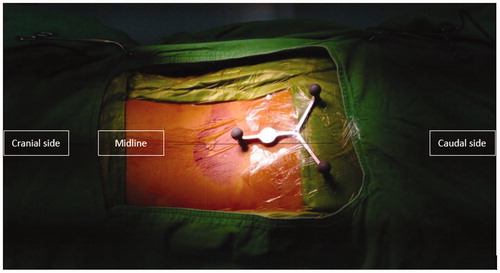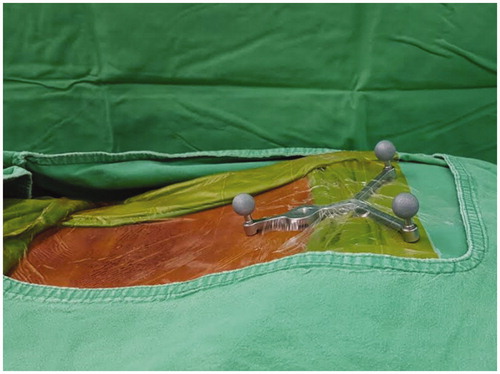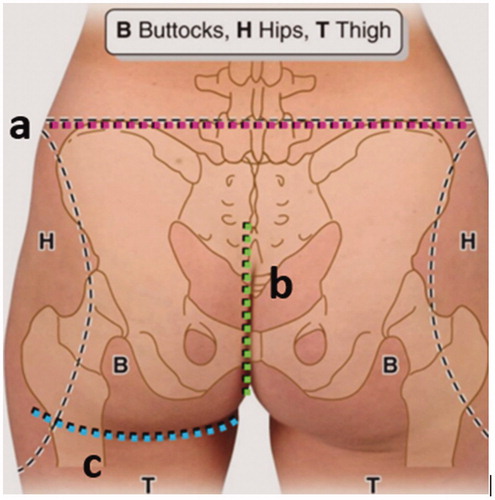Figures & data
Figure 2. Skin fixed DRF on the midline instead of bone fixed DRF on one side of PSIS or spinous process. Skin fixed DRF could be placed as close as possible to the surgical field without hindering the navigation during screw placement.

Figure 3. Lateral picture of the skin fixed DRF on the area between iliac crest line and integluteal cleft.

Table 1. Patient demographics.
Figure 4. Pedicle screw assessment in the postoperative CT scans. (A) left grade 1 medial encroachment (B) right grade 2 lateral encroachment (C) upper screw with grade 1 cranial encroachment (D) lower screw with grade 1 caudal encroachment.

Table 2. Screws position evaluation in PSIS fixed DRF.
Table 3. Screws position evaluation in cutaneously fixed DRF.
Table 4. Screw accuracies in both groups.
Table 5. Perioperative clinical outcomes.

